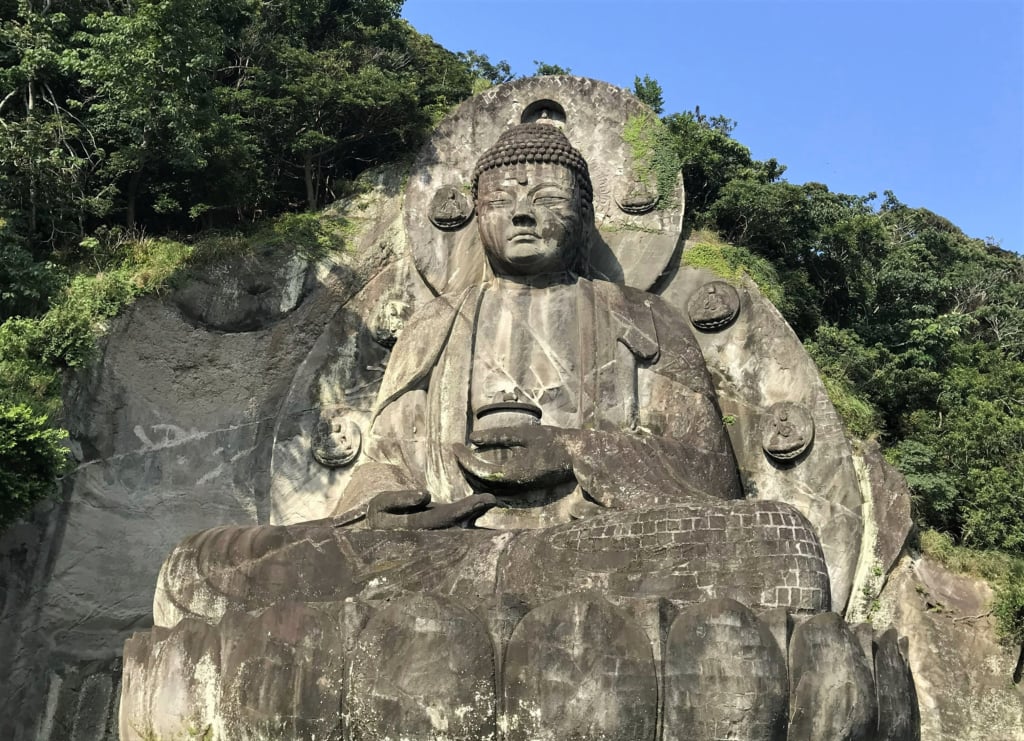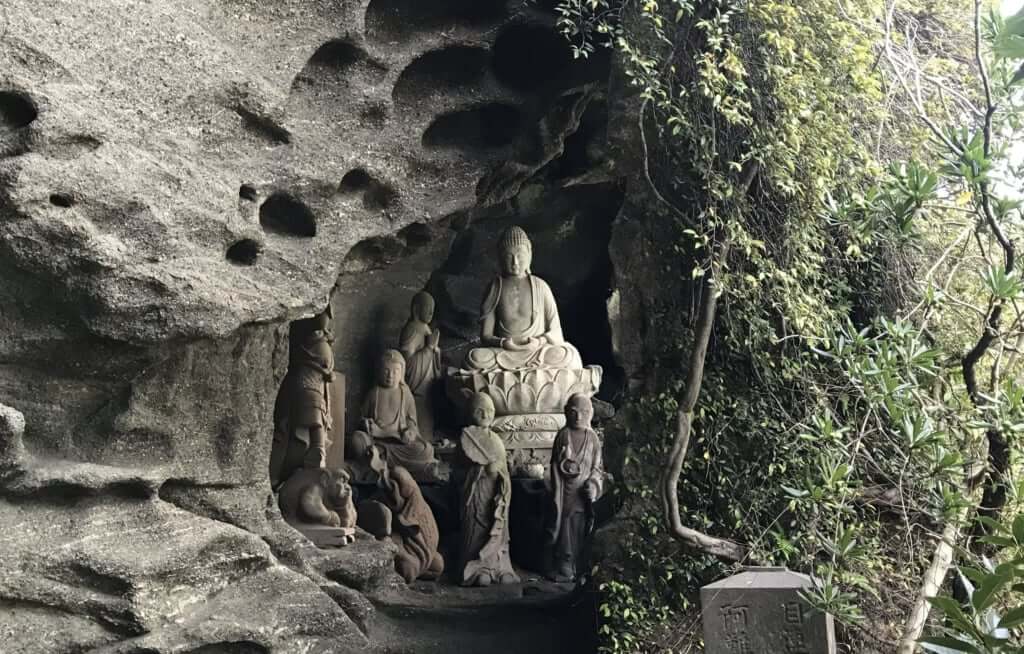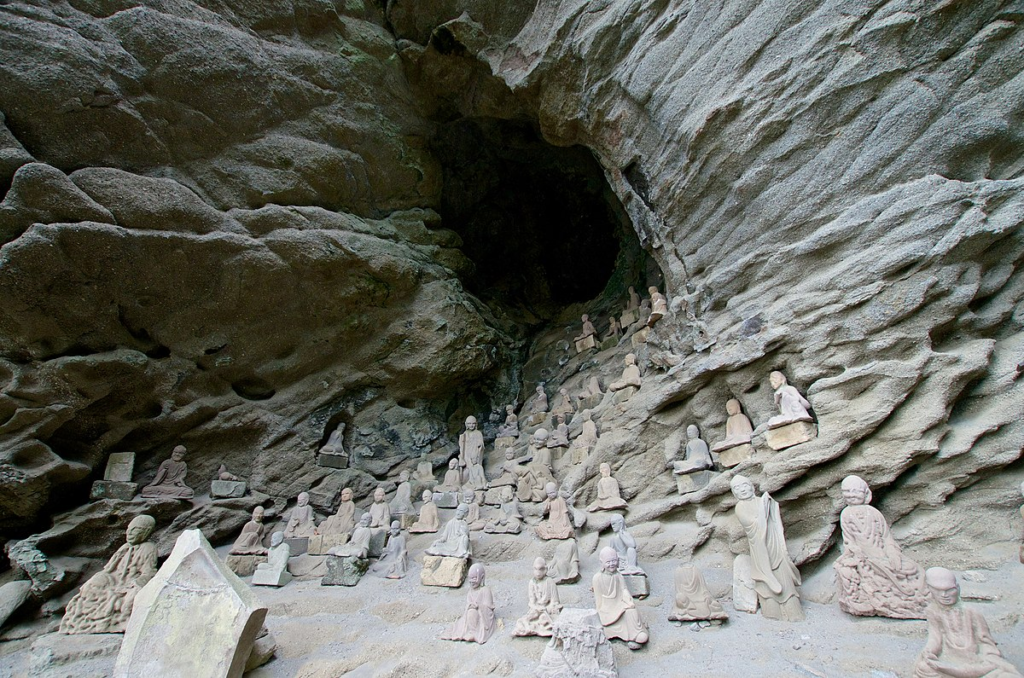Nokogiri, the Hill with One Thousand Buddhas in Chiba Peninsula
Located east of Tokyo, this sacred mountain houses over 1500 statues of Buddha, connected to the Nihon-ji temple.

© Victoire Dufay
Located by the sea and standing at an altitude of 329 metres, Mount Nokogiri takes its name from its saw shape. At its summit, a vertiginous overhang offers a breath-taking view over the Boso peninsula and Tokyo Bay.
Along the pathway, over 1500 stone sculptures of Buddha and his disciples, dating back three centuries, escort visitors to the Nihon-ji temple. To get there, tourists need to go to a little train station in a tropical-looking fishing village, Hama-Kanaya, then hike for two hours or take a cable car.
A mystical, historical walk
Built in 725 by the priest Gyoki, Nihon-ji temple was constructed on the orders of Emperor Shomu. Over the centuries, it passed into the hands of different religious groups before suffering significant damage during the anti-Buddhist Haibutsu Kishaku movement, between 1868 and 1874. Due to their abolitionist principles, rejecting the influence of religion and priests, its members conducted raids to destroy and decapitate the effigies of Buddha. To this day, this temple offers poignant evidence of this social and religious revolution, because numerous damaged statues can still be seen.
Following this episode, a reconstruction plan began in 1916, but an earthquake caused further damage to the site in 1939. During the Second World War, the hill was requisitioned as a military stronghold, which once again delayed its restoration. Since then, the temple has been classified as a ‘Important cultural property’ by the Japanese government, guaranteeing protection and regular maintenance of the premises.
A marvel for sculpture enthusiasts
The hill is a real open-air religious museum and a location of choice for admirers of Buddhist sculpture from all eras. In addition to the multitude of small damaged sculptures, known as Rakan (disciples of Buddha), dating back to around 1744, visitors can admire a statue of the goddess Kannon, standing 30 metres high and carved into the rock, Hyakashu Kannon, created in 1966.
However, the undisputed star is the seated Buddha statue Ishidaibutsu, constructed in 1783 by sculptor Jingoro Eirei Ono and his artisans. Its name signifies ‘the big stone Buddha’, because it was made using granite extracted from the hill. Standing at a height of 31.05 metres, it is the largest stone statue representing seated Buddha in Japan. His status as a healing god, known as Yakushiji Nyorai, can be seen from the medicine bowl he is holding.
Since the Edo period, Mount Nokogiri has served as a granite quarry. Its stone has been used to construct numerous buildings in Tokyo, like Waseda University. Along its slopes and at its summit, vertiginous cross-sections of rock can be seen that create the somewhat supernatural landscapes that lend it its name: saw-tooth mountain.
More information about Nihon-ji can be found on the temple’s website (in Japanese).

© Victoire Dufay

© Wikimedia

© Victoire Dufay

© Wikimedia
TRENDING
-
Ishiuchi Miyako, A Singular Perspective on Women
Recipient of the 2024 Women in Motion Award, the photographer creates intimate portraits of women through the objects they left behind.

-
Recipe for Ichiraku Ramen from ‘Naruto’ by Danielle Baghernejad
Taken from the popular manga with the character of the same name who loves ramen, this dish is named after the hero's favourite restaurant.

-
Namio Harukawa, Master of Japanese SM Art
'Garden of Domina' offers a dive into the world of an icon of ‘oshiri’, whose work has now reached a global audience.

-
The Tattoos that Marked the Criminals of the Edo Period
Traditional tattoos were strong signifiers; murderers had head tattoos, while theft might result in an arm tattoo.

-
The Emperor of Japanese Porn is Now the Star of a Netflix Series
Deliciously funny, The Naked Director especially succeeds in reviving the atmosphere that was so characteristic of 1980s Japan.





